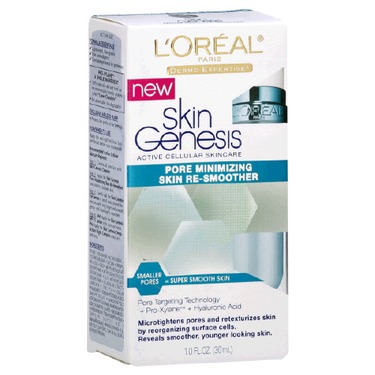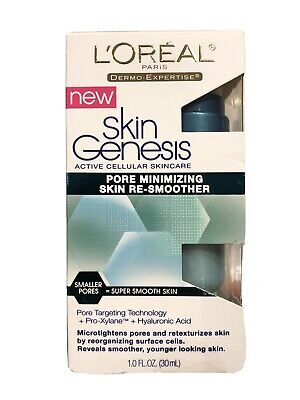

Pore minimizing myths abound in the skincare world, leading many to ineffective and often frustrating routines. This comprehensive guide dissects pore minimizing myths and reveals the proven strategies for achieving truly smoother skin texture. Skincare can be confusing, with endless products and claims promising flawless results. We’ll navigate the maze of misinformation and focus on actual science. This article clarifies the facts surrounding pore size, how to minimize appearance, and dispel the myths that circulate. We’ll explore effective ingredients, lifestyle habits, and treatments, offering a practical roadmap to healthier, smoother skin. Let’s dive into this guide that clarifies how to really minimize pores.
Understanding Pore Formation and Size:
Pore Size and Skin Type:
Skin pores are natural openings that allow for the release of sebum and sweat. However, various factors influence their appearance. Some people have naturally larger pores due to their skin type or genetics. Hormonal fluctuations, lifestyle choices, and even environmental factors like sun exposure can also contribute to the visibility of pores.
The Myth of Pore Minimizing Magic:
Many products and treatments claim to magically shrink pores, but results are often temporary or influenced by factors like hydration and skin elasticity. While visible improvements are achievable, expecting drastic changes without dedicated skincare habits is an unrealistic expectation. It is vital to separate fact from fiction to maximize the results and avoid the frustration of ineffective methods.
The Science Behind Pore Appearance:
The appearance of pores is linked to a complex interplay of factors. Sebum production, skin elasticity, and collagen production all play a role. Understanding these mechanisms is essential for creating a personalized and effective approach. Dermatologists, for instance, frequently emphasize the role of consistent skincare routines for healthier skin, which in turn can impact the appearance of pores.
Effective Ingredients and Their Mechanisms:
Exfoliation’s Role:
Regular exfoliation can help remove dead skin cells that can clog pores, contributing to their visibility. Chemical exfoliants like AHAs and BHAs can gently remove buildup, allowing for smoother skin texture. Studies have shown that regular exfoliation can help improve the appearance of pores. However, excessive or harsh exfoliation can damage skin barrier function, potentially counterproductive.
Hyaluronic Acid and Hydration:
Hyaluronic acid is a humectant that draws moisture into the skin, keeping it plump and hydrated. Hydration is key to maintaining healthy skin elasticity, which is often correlated with the appearance of pores.
Retinoids and Skin Renewal:
Retinoids stimulate cell turnover, helping to diminish the appearance of pores over time. It encourages smoother texture, and often, visible results. Numerous studies demonstrate the effectiveness of retinoids in addressing various skin concerns, including acne and pore appearance.
Lifestyle Habits and Skin Health:
Stress Management:
Stress can contribute to increased sebum production, potentially leading to enlarged pores. Practicing stress-reducing activities like meditation, yoga, or spending time in nature can significantly impact skin health.
Nutrition and Hydration:
A balanced diet rich in antioxidants and vitamins supports healthy skin function, potentially influencing the appearance of pores. Adequate hydration, both from within and externally, is essential for maintaining skin elasticity. Proper hydration is linked to healthier skin and reduced pore visibility.
Sun Protection:
Protecting your skin from sun damage is crucial. UV rays contribute to collagen breakdown, affecting skin elasticity and potentially increasing pore visibility.
Skincare Routines for Optimal Results:
A Comprehensive Routine:
A comprehensive skincare routine tailored to your specific needs can significantly impact the appearance of pores. A consistent routine that incorporates cleansing, exfoliation, hydration, and sun protection can optimize skin health and promote smoother skin texture. It is important to experiment with different products and find what works best for your individual needs. Consulting a dermatologist can guide you in building a tailored routine.
Choosing the Right Products:
Selecting products that address specific concerns and match your skin type is critical. Avoid harsh or irritating ingredients. Always patch test new products before applying them to your face. Consider the ingredients and their potential benefits for pore minimization to avoid wasting time and money on ineffective products.
Consistency is Key:
Consistent application of products according to the recommended routine is essential for optimal results. Consistency is essential for seeing significant improvements in skin texture and pore appearance. Be patient, as positive changes often take time to develop.
Advanced Treatments and Professional Care:
Chemical Peels:
Chemical peels can effectively exfoliate the skin, promoting cell turnover and potentially reducing pore visibility. A dermatologist can determine the appropriate strength and frequency of peels for your skin type. Chemical peels can be part of a personalized approach to skincare.
Microdermabrasion:
Microdermabrasion uses tiny crystals to gently exfoliate the skin, removing dead skin cells and improving skin texture. This treatment is often used as a part of a comprehensive skin-care routine.
Professional Consultations:
Consulting with a dermatologist allows for personalized recommendations and treatment plans. A dermatologist can assess your individual skin needs and recommend appropriate treatments.
In conclusion, pore minimizing is a multifaceted process that involves understanding the science behind pore formation and selecting effective treatments. By debunking myths and embracing evidence-based approaches, you can achieve smoother, healthier skin texture. Focus on a consistent skincare routine, incorporating ingredients proven to improve skin texture and overall skin health. Consult a dermatologist for personalized advice if needed, as your skin type and concerns may require a tailored approach. Ready to unlock your smoother skin potential? Explore our range of pore-minimizing products and discover the path to flawless skin today!